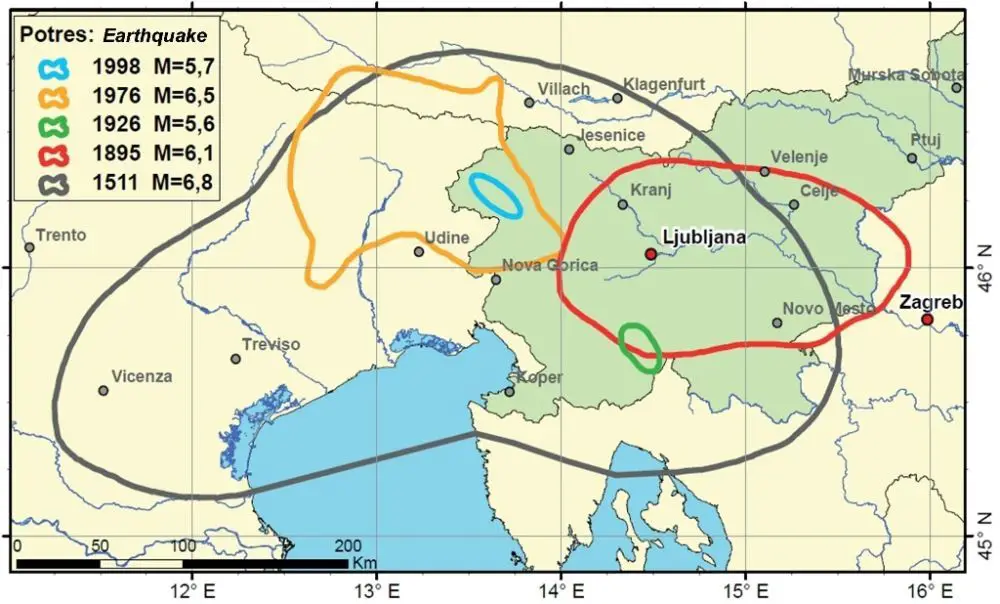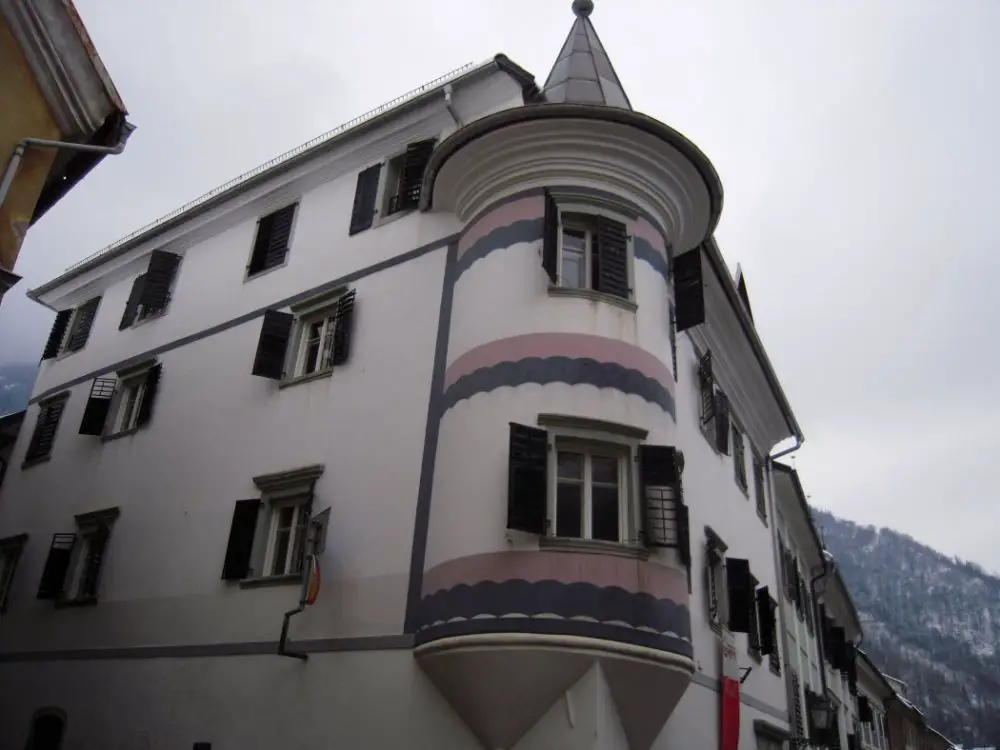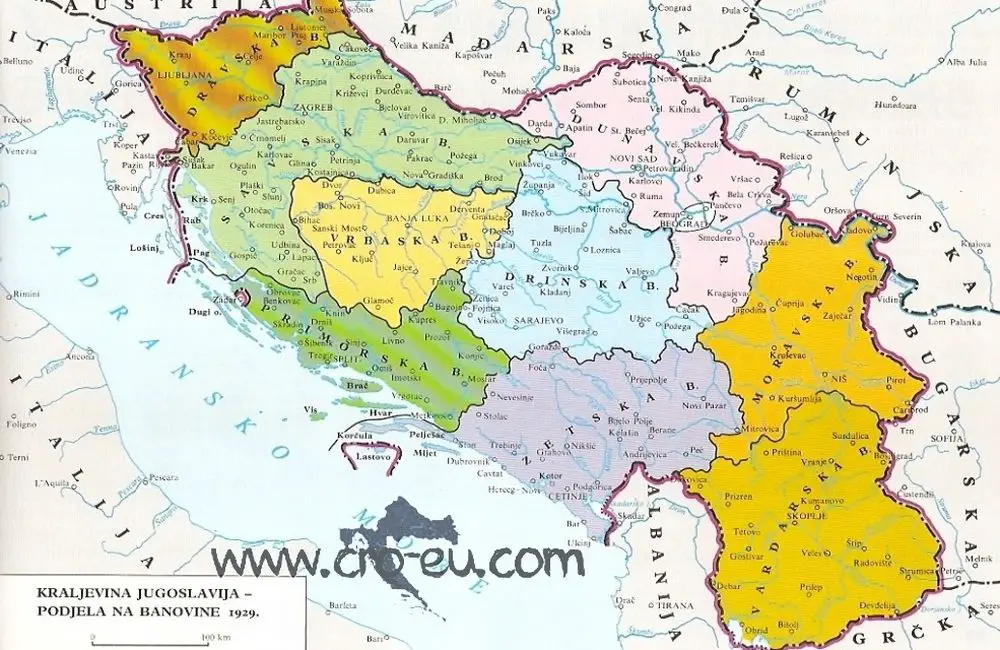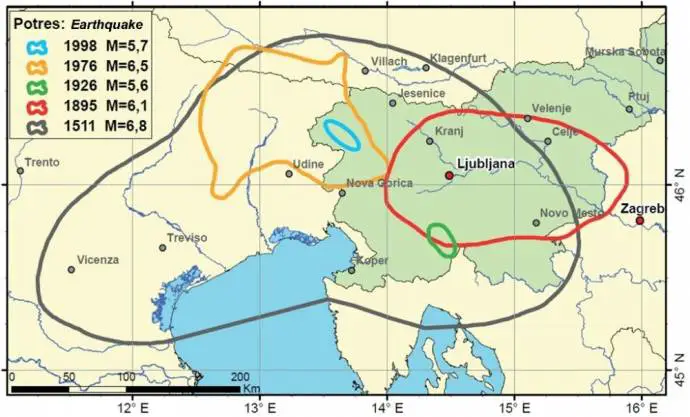March 26, 2018
March 26
In 1511 several strong earthquakes affected Carniola, and the strongest one occurred on today's day with the epicentre along the Idrija fault. The estimated magnitude of the earthquake was 6.8 to 6.9 MMS. The earthquake knocked down buildings a hundred kilometres away from the epicentre, including a large part of the Ljubljana defence wall and many castles in the countryside, such as the ones in Škofja Loka and Bled. The death toll of this earthquake and another one that followed two days later is estimated at 12,000.

Comparison of five strongest earthquakes in Slovenia region: 1511 (Idrija), 1895 (Ljubljana), 1926 (Cerknica), 1976 (Friuli) and 1998 (Upper Soca valley); cartography: M. Zivcic, P. Zupancic – Slovenian Environment Agency; Reference No. 6. For the source click here.
March 27
In 1921 the Slovenian film director, editor, scriptwriter and caricaturist Dušan Povh was born in Novo mesto. Povh studied architecture, but was arrested by Italian occupying forces in 1942 and joined the Partisan Army a year later. There he became one of the founders of the Partisan puppet theatre and Pavliha newspaper. After the war he joined the National film company, which later transformed into Triglav Film. In this career Povh took on various film-making roles, and at Total Slovenia News we came across him as an editor of the popular kid's cartoon Bojan the Bear.
March 28
In 2013 the Slovenian alpine skier Boris Strel died. Strel was the first Slovenian alpine skier to stand on the podium of the World Championship, receiving bronze in Schladming in 1982. He also remains the only male Slovenian skier to have ever won a World Cup grand slalom race, which he won in Cortina d'Ampezzo in 1981.
March 29
In 1963 Slovenia's best shooter Rajmond Debevec was born in Postojna. At the 2000 Olympic games in Sydney, Debevec won gold by setting an Olympic record in the 50 m rifle three-position shooting category. In 2008 he won bronze in Beijing and another bronze in 2012 in London. In this category, Rajmond Debevec also holds the World Record, which he set in 1992 in Munich. So far Debevec has performed at eight Olympic Games, which is a Slovenian record.
In 1811 a severe fire broke out in Tržič, completely destroying 150 houses, over 60 workshops and taking 75 lives on its way. The reconstruction of the city was slow, while the accident prompted a decree by which all wooden gates and window shutters be replaced by iron ones. This feature of the town remains till today.

Iron shutters on windows of a building on the Tržič main square.
The settlement of Tržič originates from Roman times along the road connecting Upper Carniola with Carinthia over the Ljubelj mountain pass.
March 31
In 1931 a census was performed in the Kingdom of Yugoslavia. In the administrative region called Dravska banovina (Drava Banovina, also Drava Banate), with its seat in Ljubljana, the population amounted to 1,144,298 people, which accounted for 8.21% of the entire population of Yugoslavia. The population density of Drava Banovina was 76 people per square kilometre, compared to the Yugoslavian average of62. Ninety-five percent of the people in this region declared Slovenian to be their mother tongue.

Map of Kingdom of Yugoslavia (1918 – 1944) and its Banovinas
April 1
According to folk tradition April 1, also dan norcev (the Fools’ Day) is the day when pranks are officially admissible. As April Fools’ Day is an international holiday celebrated across the entire Western hemisphere, there are several theories about where and when this day originates from. One of them suggests that April Fool’s Day originates in changing attitudes towards medieval customs. In the late Middle Ages people celebrated the New Year on March 25, also called the Feast of the Annunciation, marking the angel Gabriel’s delivery of the news to Mary that she had conceived with God. The celebrations lasted for a week, ending on April 1st. As in the 18th century the New Year began to be increasingly celebrated on January 1st, people still celebrating it on March 25, became mocked by the “progressives”. Hence April Fools’ Day.






